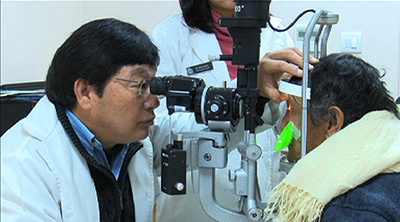 Six years since its implementation in 2014, the eye bank centre in Thimphu saw no donor till date except for a few pledges to donate. This is owing to a lack of human resource at the centre, lack of proper laws on organ transplant, social belief system around organ donation and less requirement of cornea.
Six years since its implementation in 2014, the eye bank centre in Thimphu saw no donor till date except for a few pledges to donate. This is owing to a lack of human resource at the centre, lack of proper laws on organ transplant, social belief system around organ donation and less requirement of cornea.
The centre has not received a single donor to date and only around 200 Bhutanese have pledged to donate cornea to the centre so far. Not many come forward because of the social belief which has it that people will be born blind in their next life. Besides, the hospital is also not actively pursuing the eye bank centre due to a number of factors. The centre which was previously attached as a unit with the National Referral Hospital was moved to a new building which was built as a full-fledged infrastructure for eye care. But today there is no dedicated pool of staff for the centre. The centre has around 20 ophthalmic staffs today. The number was lesser a few years ago. For it to become a full-fledged centre, it should meet the international standards with adequate trained staff, proper facilities and equipment.
 “We are lacking the prerequisite to starting a full-fledged eye banking centre. First, we do not have adequate human resource. We need at least two experts, an eye bank manager and we need at least three to four well-trained technicians to receive the cornea, to do proper sorting out and assess the transplant. We have trained technicians but due to shortage of staff today they are not able to perform eye transplant. For instance, they are in the Outpatient Department today but tomorrow they will be in Operation Theatre and the next day they are in the field. So we do not have enough manpower,” said Dr Nor Tshering Lepcha, a Cornea Specialists at the National Eye centre.
“We are lacking the prerequisite to starting a full-fledged eye banking centre. First, we do not have adequate human resource. We need at least two experts, an eye bank manager and we need at least three to four well-trained technicians to receive the cornea, to do proper sorting out and assess the transplant. We have trained technicians but due to shortage of staff today they are not able to perform eye transplant. For instance, they are in the Outpatient Department today but tomorrow they will be in Operation Theatre and the next day they are in the field. So we do not have enough manpower,” said Dr Nor Tshering Lepcha, a Cornea Specialists at the National Eye centre.
Lack of proper laws on organ transplant is also one of the reasons why the eye bank is not as functional as it ought to be. Moreover, the requirement for cornea in the country is less and does not urgently call for a full-fledged eye bank.
“I met with the Sight Lab Eye Bank’s human resource Director who is of the opinion that Bhutan’s cornea requirement is minimal. At most, we require 200 to 300 cornea in a year. And to have a full-fledged eye bank for such a small population with less requirement it will cost a lot of money,” added Dr Nor Tshering Lepcha.
He added that today the requirement is easily met from Nepal’s eye bank and that the international agencies have committed to support the prevention of corneal blindness instead of investing in a full-fledged eye bank.
Once the eye bank is fully functional the centre plans to create awareness by recruiting counsellors so that more people will come forward to donate cornea.
Samten Dolkar







